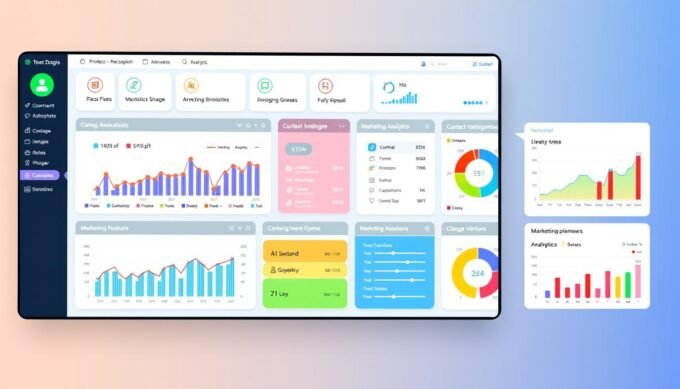Have you ever wondered about the balance of chemicals in our body? Think about ammonia, a compound vital for life but potentially deadly. When does it become too much? Ammonia toxicity is a hidden danger that can turn fatal without warning. It’s a serious issue for those with acute liver failure (ALF), where high ammonia levels predict mortality. A study shows the link between high ammonia levels and risks like encephalopathy and brain swelling.
Key Takeaways
- Knowing about ammonia is key to spotting ammonia poisoning and its signs.
- Symptoms can get worse quickly, affecting the mind and causing major nerve problems.
- Understanding ammonia health risks can save lives, especially at levels near 124 μmol/L, linked to death.
- Fast medical help, which often reduces ammonia production, can save a person’s life.
- It’s important to fully understand ammonia’s role to appreciate the seriousness of ammonia overdose.
- Staying proactive in health care, like regular tests and awareness, is crucial to prevent ammonia toxicity.
Understanding Ammonia: What It Is and Its Role in the Body
Ammonia is a colorless gas that consists of nitrogen and hydrogen. It is crucial in our body’s biological processes. As NH3, it helps create amino acids, which are building blocks for proteins and other vital molecules. But, too much ammonia can be harmful, causing health problems.
Our body makes ammonia when gut bacteria break down proteins. The liver then turns ammonia into urea, a process important for getting rid of ammonia safely. We pass urea out of the body in our pee. However, if there’s liver disease or genetic issues, ammonia can build up in the blood. This can harm our brains and cause other serious issues.
The Importance of Ammonia in Metabolism
Ammonia plays a key role in how our cells use energy. It helps make and break down amino acids and is crucial for energy production. Ammonia keeps our body’s pH balance and is involved in breaking down carbs and fats. It’s vital to know that ammonia supports life but can be dangerous in excessive amounts.
How Ammonia Is Produced in the Body
Ammonia is created in the intestines, muscles, and kidneys, with the liver converting it into urea. Problems with these processes, like liver disease or genetic issues, can raise ammonia levels. This can lead to severe health issues. It’s especially important to watch ammonia levels in people at risk.
| Condition | Normal Ammonia Level (mcg/dL) | Associated Risks |
|---|---|---|
| Newborns (10 days-2 years) | 68-136 | Higher susceptibility to urea cycle disorders |
| Children (>2 years) | 19-60 | Lower risk, monitoring recommended |
| Adults | 10-80 | Monitoring necessary in case of liver disease, genetic conditions |
Signs of Elevated Ammonia Levels
It’s important to know the symptoms of high ammonia levels for early action. High ammonia in the blood causes symptoms because it’s toxic to the brain and other organs.
Common Symptoms I Should Watch For
Look out for confusion, tiredness, and mood swings as early signs. You might also see hand tremors or speech issues. These first symptoms are often overlooked, delaying needed treatment.
Severe Symptoms That Indicate a Crisis
When ammonia levels get worse, serious symptoms can happen. This includes extreme confusion, weakness, seizures, and sometimes coma. Spotting these signs fast is key to prevent lasting harm and get urgent care.
Knowing these symptoms and how ammonia toxicity grows is key for safety, especially for those with liver or kidney problems or genetic disorders. Being aware helps people get the right help fast, avoiding serious issues.
How Ammonia Levels Are Measured
It’s important to know how ammonia levels are checked if you’re worried about its health risks. Doctors start by taking your blood to measure ammonia. They see how much you have in micromoles per liter. This shows if there’s a risk of ammonia poisoning or imbalance.
Testing Methods I Can Expect
To test for ammonia, a blood sample is needed. It’s then looked at using an enzymatic method. This checks if the ammonia in your body is at a normal level, usually under 30 micromol/L in healthy adults. This method is detailed and can spot small increases in ammonia levels.
Get ready for these tests because high ammonia can cause serious issues. This includes changes in consciousness or even a coma in severe cases.
Interpreting My Test Results
Understanding your test results is key to managing health concerns from ammonia. An arterial ammonia level over 100 micromol/L is serious. It needs fast medical help. These high levels can lead to dangerous problems like encephalopathy or brain swelling.
If your ammonia levels are really high, near or above 174.7 µmol/l, it’s serious. At this point, staying in the hospital and getting intense care might be needed. High ammonia is linked to higher chances of dying. This is why it’s urgent to act fast.
Doctors also use these levels to figure out your risk of dying. They use methods like logistic regression analysis. This looks at factors like your ammonia level when you were admitted and if you have brain swelling.
Quickly dealing with high ammonia levels can change the outcome a lot. This is especially true for sudden liver failure. Acting fast can save lives.

Factors Influencing Ammonia Levels
It’s important to know what affects ammonia levels in our bodies to manage health better. The liver is key in this process. It turns ammonia into urea. This urea is then removed by our kidneys. But some health issues and what we eat can upset this balance. This may lead to high ammonia levels and health dangers.
Liver Function and Its Impact on Ammonia
The liver is crucial in controlling ammonia levels. Liver problems, like cirrhosis or acute liver failure, can cause too much ammonia. This results in ammonia toxicity. Research in Liver Transplantation shows liver diseases increase ammonia. They do this by messing up the urea cycle. This ups the risk of ammonia exposure.
Dietary Considerations
What we eat greatly affects how we manage ammonia. Eating a lot of protein can make more ammonia. This happens because our bodies break proteins down into amino acids. These acids then make ammonia. So, watching how much protein you eat is vital. This is especially true for those with liver or kidney issues. It helps keep ammonia levels in check.
| Study | Focus | Outcome |
|---|---|---|
| Molecular Genetics and Metabolism 2014 | Longitudinal study on urea cycle disorders | Highlighted the critical role of early diagnosis in managing hyperammonemia |
| Acta Paediatrica 2008 | Hyperammonemic episodes in urea cycle disorders | Underlined the need for awareness and monitoring of ammonia levels in patients |
| Pediatric Clinics of North America 2018 | Overview on Urea Cycle Disorders | Discussed treatment strategies and management practices for maintaining safe ammonia levels |
| Seizure 2015 | Influence of glutamine synthetase gene on hyperammonemia | Provided insights into genetic factors that could predispose individuals to elevated ammonia levels |
The Risks of High Ammonia Levels
It’s very important to understand how dangerous high ammonia levels can be. This is true for anyone who might face ammonia overdose or poisoning. Such conditions not only create serious health dangers but can also worsen existing health issues.
Potential Health Complications
Being exposed to ammonia could quickly become serious, leading to big health issues. High ammonia levels, or hyperammonemia, can be very risky. They could cause someone to go into a coma or even result in death. People with liver disease must be careful since it can make ammonia levels jump unexpectedly, raising the risk of serious poisoning.
Many factors like viral infections, stress, and changing what you eat can increase ammonia levels. Conditions like Urea Cycle Disorders (UCDs) can make ammonia levels go up and down. Without timely treatment from things like RAVICTI, the damage could be long-lasting. It’s key to know that using RAVICTI requires careful thought about side effects and is not for everyone.
Understanding Hepatic Encephalopathy
Hepatic encephalopathy shows how liver problems can get very bad because the liver can’t clean ammonia out of the blood. This condition can cause confusion and disorientation. Without fast and right treatment, it could lead to a coma. It’s vital to handle ammonia exposure very carefully.
Doctors often use treatments like lactulose and lactitol first for hepatic encephalopathy because they help reduce ammonia. In critical situations with very high ammonia levels, treatments like hemodialysis may be needed fast. This is especially true for newborns, who are very sensitive.

High ammonia levels are a serious risk. Managing these levels well is key to avoiding major health problems. This is especially true for people with liver issues or genetic conditions like urea cycle disorders. Knowing about these risks and managing them proactively is crucial for health safety.
Safe Ammonia Levels: What I Need to Know
It’s important to know what safe ammonia levels are to keep healthy. Daily, I might come across ammonia in many ways. It’s in the environment and household products. Knowing the safe limit helps me steer clear of health issues.
Normal Ranges in Adults
For a healthy adult, normal blood ammonia levels range between 15 to 45 micrograms/dL. This is below the harmful level. It gives me a way to check my health against ammonia exposure.
When I Should Seek Medical Advice
If I feel confused or very sleepy, it might mean my ammonia levels are too high. These symptoms could show a serious risk that needs fast medical help.
Learning about common ammonia levels in various places was enlightening:
- In natural air: 1-5 parts in a billion (ppb)
- In rivers and bays: Usually less than 6 parts per million (ppm)
- Soil after using fertilizer: Can go over 3,000 ppm, but decreases in days
Anhydrous ammonia exposure at work shouldn’t go past 25 ppm in an 8-hour day. This info helps me know what’s safe at work. Dangerous levels start at 300 ppm. It shows there’s a thin line between safe and unsafe levels. Knowing this keeps me prepared to handle my surroundings wisely.

| Environment | Ammonia Concentration | Risk Level |
|---|---|---|
| Air (Natural) | 1-5 ppb | Low |
| Rivers and Bays | < 6 ppm | Low |
| Occupational Exposure (8-hour TWA) | 25 ppm | Monitored |
| High-Risk Immediate Danger | > 300 ppm | High |
Knowing these numbers helps me gauge ammonia risks. It guides me in keeping safe at home and work. This knowledge is key to my health management. It lowers the chance of health problems from ammonia.
Acute High Ammonia Levels: What Happens
When ammonia levels spike suddenly, it’s crucial to know what to do next. A quick rise in ammonia signals a potential for ammonia toxicity. This is a serious issue that needs immediate action.
The Threshold for Serious Health Effects
Studies show ammonia levels over 100 micromol/L can alter mental states due to toxicity. These high levels can cause symptoms needing urgent care. This can prevent lasting harm or death.
Immediate Response Actions I Can Take
For newborns, stop giving protein immediately. Adults may need hemodialysis or medication like lactulose. These measures help lower ammonia levels and absorption, crucial in tackling an overdose.

Reacting quickly is key due to the serious risks of high ammonia. Understanding the rapid progression of acute scenarios is crucial for health.
| Parameter | Without IHM | With IHM |
|---|---|---|
| MDF Score | 50 | 68 |
| MELD Score | 24 | 30 |
| GAHS | 7.7 | 8.9 |
| Mean Hospital Stay (days) | 15 | |
| Patients without corticosteroids | Patients with corticosteroids | |
| Total Patients | 135 | 39 |
This data shows the serious outcomes of an ammonia overdose. Being aware and prepared to act is crucial for handling these risks well.
Long-Term Effects of Chronic High Ammonia Levels
Living with high ammonia levels affects both your body and mind over time. It’s important to know the long-term effects and ways to recover. This knowledge helps you take care of your health better.
How Persistent Issues Can Affect My Life
High ammonia can cause serious brain issues, like hepatic encephalopathy (HE). This happens in about 40% of people with cirrhosis, a major cause of high ammonia. HE changes how well you can think and move.
Lifespan after getting HE is often around two years. It’s worse for people over 65, dropping to one year. These facts show how critical it is to manage this condition well.
High ammonia does more than risk HE. It also raises the chance of dying from any cause in people with stable cirrhosis. Having a lot of ammonia in your blood predicts more hospital visits for liver problems. It’s key to watch these levels and know how they might change based on other health factors. This approach uses the AMMON-OHE model.

Recovery Options and Strategies
Dealing with chronic ammonia toxicity needs a combined effort. Managing ammonia involves medical care and changes in how you live. You might need antibiotics, osmotic laxatives like lactulose, and maybe zinc supplements.
Changing what you eat is also vital. You have to balance protein to not raise ammonia but keep healthy. Getting regular checks on your ammonia levels is crucial. Doctors suggest testing plasma ammonia if you show signs of ammonia trouble. Here is more information on ammonia-related complications.
To live with high ammonia levels, you need to be well-informed and proactive. Understanding high ammonia’s impacts and using thorough recovery plans help you keep a good life quality. This approach lets you handle the challenges of high ammonia well.
Emergency Situations: When Ammonia Levels Become Critical
When ammonia levels get really high, it’s a big deal. It’s important to know when to act fast to avoid bad outcomes like trouble breathing or worse, death. Ammonia poisoning needs quick action to keep people safe.
Defining Critical Ammonia Levels
When ammonia levels hit a certain point, they can be deadly. The Department of Homeland Security says 300 ppm (parts per million) of ammonia is super dangerous. Even smelling a little bit, like 5 ppm, means there’s too much in the air. If the level goes over 200 ppm, it’s time to act fast to stop serious harm.
Emergency Treatments Available
If someone gets poisoned by ammonia, getting help right away is key. Doctors might need to help someone breathe better or get the ammonia out of their blood. This could mean using medicines or even putting them on dialysis to clean their blood.
Also, if someone’s been around too much ammonia, moving them to fresh air quickly is crucial. Cleaning any ammonia off their skin or eyes right away is important. Doctors might use special oxygen to help with any breathing problems from the ammonia.
| Condition | Treatment | Exposure Level (ppm) |
|---|---|---|
| Mild irritation (eyes, nose, throat) | Fresh air, flushing eyes/nose | 5-50 |
| Respiratory distress | Moistened oxygen, hospitalization | 50-200 |
| Critical poisoning (coma, seizures) | Dialysis, respiratory support | >200 |
Knowing when ammonia levels are too high and what to do is critical. This can save lives during an ammonia poison emergency, keeping everyone as safe as possible.
Conclusion: Managing My Health Regarding Ammonia Levels
Knowing how to manage ammonia in my body is key for my health. High ammonia levels can come from liver issues or urea cycle problems. They cause serious health problems, including brain symptoms and dangerous complications. It’s important to stay aware of the risks from Ammonia health risks. This means making lifestyle changes and following medical advice. This is especially true for people with liver problems or a history of Ammonia exposure.
Lifestyle Changes That Can Help
Stopping high ammonia levels isn’t just about medicine. It also involves living healthily. Choosing the right foods can help my liver and reduce ammonia. Avoiding harmful substances is another way to help my liver work better. Furthermore, studies show that changing gut bacteria and using treatments like carbon adsorbent could help. More research is needed to see how effective and safe they are.
Regular Check-Ups and Monitoring
Regular doctor visits are vital for checking ammonia levels. These appointments include tests for hyperammonemia. Talking openly with my doctor lets us create a specific treatment plan if necessary. This plan might involve medications like lactulose or rifaximin. However, knowing about their side effects is important. In serious cases, there might be options like artificial liver devices or transplants.
Quick and ongoing checks are vital for dealing with ammonia level risks. Understanding treatment plans and patient outcomes is complex but crucial. By working closely with my healthcare team, I can keep my ammonia levels under control. This helps protect my health.
FAQ
How High Can Ammonia Levels Go Before Indicating a Risk of Death?
What Role Does Ammonia Play in My Body’s Metabolism?
How Is Ammonia Produced in My Body?
What Symptoms Should I Watch For That May Indicate High Ammonia Levels?
What Are the Severe Symptoms That Indicate a Serious Ammonia Crisis?
How Are Ammonia Levels Measured in My Body?
How Can My Liver Function Affect My Ammonia Levels?
How Does My Diet Influence Ammonia Levels?
What Are the Potential Health Complications From High Ammonia Levels?
What Is Hepatic Encephalopathy and Its Relationship With Ammonia?
What Are Considered Safe Ammonia Levels for Adults?
When Should I Seek Medical Advice Regarding Ammonia Levels?
What Happens When I Have Acutely High Ammonia Levels, and What Are the Health Risks?
What Immediate Actions Can I Take If I Suspect High Ammonia Levels?
How Can Chronic High Ammonia Levels Affect My Long-Term Health?
What Recovery Options Are Available for Those Suffering From Chronic High Ammonia Levels?
What Defines a Critical Ammonia Level, Indicating an Emergency?
What Are the Available Emergency Treatments for a Patient With Critically High Ammonia Levels?
What Lifestyle Changes Can Help Manage My Ammonia Levels?
How Important Are Regular Check-Ups and Monitoring for Ammonia Levels?
Source Links
- Ammonia Levels: Causes, Symptoms & Treatment
- Ammonia Levels in Cirrhosis: What They Indicate
- Hyperammonemia: High Ammonia Levels and What’s Considered Normal
- Ammonia Levels: MedlinePlus Medical Test
- Ammonia – Health Encyclopedia – University of Rochester Medical Center
- Hyperammonemia – StatPearls – NCBI Bookshelf
- Symptoms of High Ammonia Levels
- Hyperammonemia: Definition, symptoms, causes, treatments
- Elevated Blood Ammonia Level: Symptoms, Causes, Treatments
- Predictive value of arterial ammonia for complications and outcome in acute liver failure
- Hyperammonemia: What It Is, Causes, Symptoms & Treatment
- Genetics of Hyperammonemia: Background, Pathophysiology, Epidemiology
- Drug-induced hyperammonaemia
- No title found
- Ammonia | Public Health Statement
- Ammonia Toxicity – StatPearls – NCBI Bookshelf
- Ammonia level at admission predicts in-hospital mortality for patients with alcoholic hepatitis
- Serum ammonia is a strong prognostic factor for patients with acute-on-chronic liver failure – Scientific Reports
- Why shouldn’t ammonia be used in the diagnosis and management of hepatic encephalopathy?
- SCCM Pod-466: Hyperammonemia, the Silent Killer
- Ammonia
- Ammonia Prehospital Management
- Ammonia | Medical Management Guidelines | Toxic Substance Portal
- High ammonia level treatment: Types and side effects
- Hyperammonemia: Practice Essentials, Background, Pathophysiology
- Ammonia is associated with liver-related complications and predicts mortality in acute-on-chronic liver failure patients – Scientific Reports













